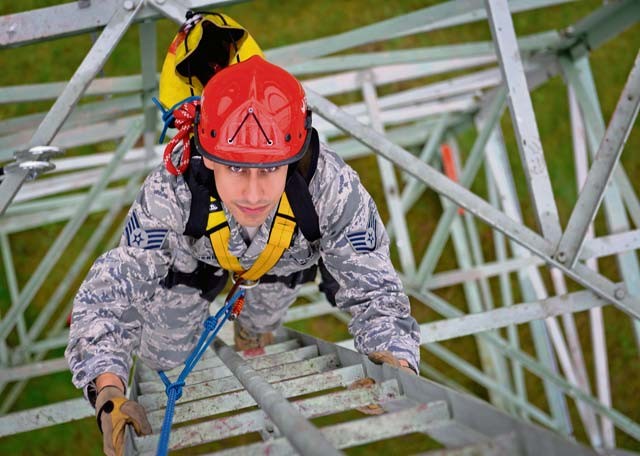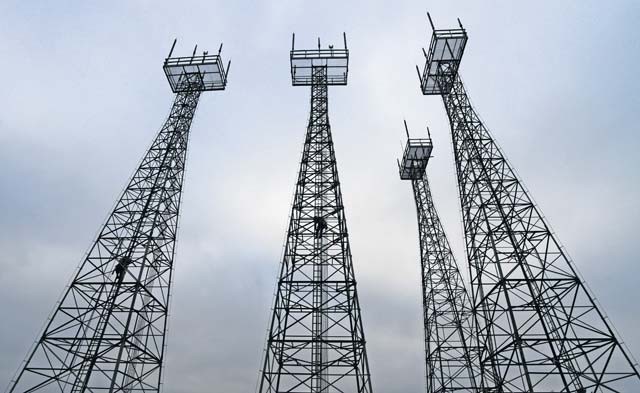
Airmen from the 1st Communications Maintenance Squadron participated in Specialized Technical Aided Rescue Training for tower and rope access Oct. 5 through 15 on Ramstein.
The START training en-compasses multiple tower and ground situations, instructing students on ways to rescue a telephone tower fall victim.
“(This training) includes situations where multiple people help and where just one individual rescues the victim,” said Staff Sgt. Wesley Wright, 1st CMXS cable and antenna systems technician. “These training techniques are above and beyond what normal cable and antenna personnel would get but are vital due to the nature of our mission.”
Students learn multiple rigging techniques for raising and lowering victims to safety. Each technique is situationally based depending on the tower, position of the victim and how many personnel are on-site. The students are taught where to properly secure the victim for a safe rescue as well as how to overcome obstacles that may arise during the rescue.
“The class made me comfortable with the different ways to get a victim down from a tower if an accident was to occur,” said Airman 1st Class Kenneth Sargent, 1st CMXS cable and antenna systems technician.
The main goal of the class was to familiarize cable and antenna maintenance technicians with the skills needed to possibly save their wingmen.
“Our hope is that all of the participants in this class use what they have learned to recognize the importance of doing their job safely and to be more prevention-oriented to ensure a safe environment in the workplace,” said Kurt Braunle, START president. “We want them to have the confidence to know that they have the skills to perform a rescue in the event a situation would present itself.”
According to Wright, the training is not only valuable for students who attend the class, but the hope is that they spread the wealth of knowledge to more than 3,000 cable and antenna Airmen within U.S. Air Forces in Europe.
“This training gives our Airmen the skills to accomplish a rescue from a tower in the event a coworker is unable to ascend or descend the tower on their own,” Wright said. “By sending (only a few people), this advanced class enables cable and antenna Airmen to train other tower climbers across USAFE, allowing the Air Force to save approximately $300,000 a year in training costs.”
The START program is just one way that the Air Force cares for Airmen and their safety.



